Sept. 11 Memorial and Museum: Magnificent complex brings back my 9-11 New York memories as well
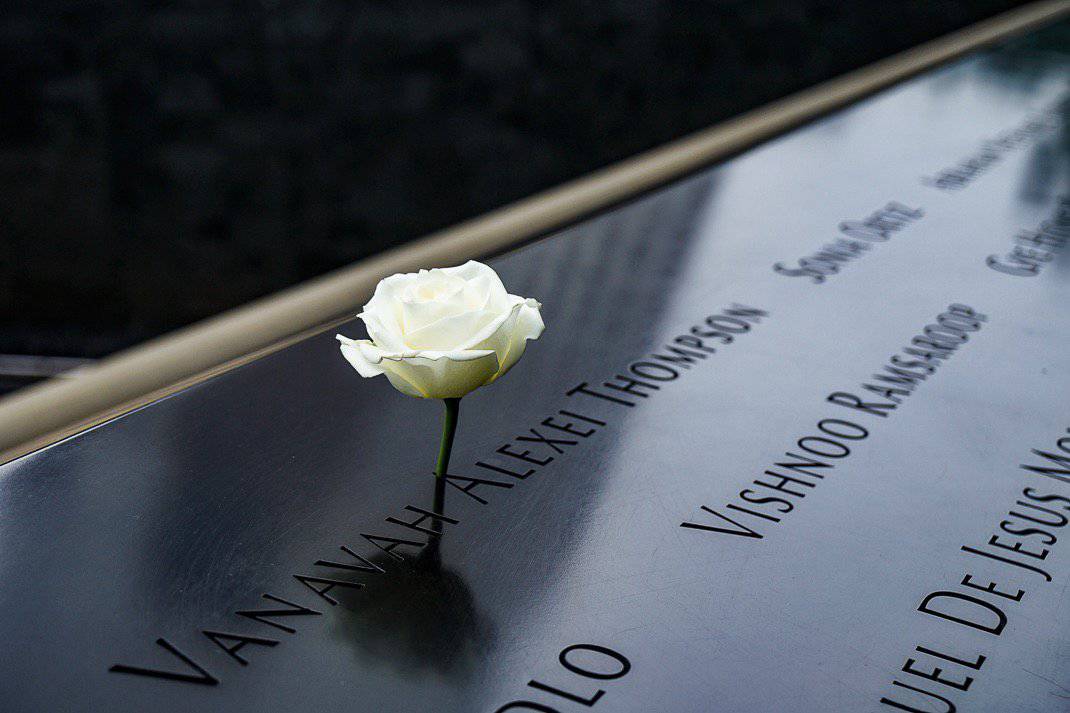
(Director’s note: This is the first blog of a four-part series on my 11-day trip back to the United States.)
NEW YORK – Alexis Ortega wasn’t alive when 9-11 happened. But the terrorist attacks that forever changed our world still affect him. The 21-year-old security guard at New York’s National September 11 Memorial and Museum sees how one of the world’s most moving monuments affects others. Every day.
He remembers one woman perusing the bronze plaques near where he and I talked during my recent visit to the United States. The plaques are engraved with the names of all 2,983 victims who died that day, (including six who died in a previous attack on the World Trade Center in 1993).
“She completely broke down,” he said. “She knew a name.”
We Americans have a saying about 9-11. All of us either know someone who died or know someone who knows someone who died. When I moved to Rome for my 16-month sabbatical shortly after 9-11, I rented my Denver condo to a guy who worked in the North Tower, the first building hit. He and his friend felt the building shake when the plane collided. They left their lower floor office and went outside to see what happened. They saw the smoke billowing from above.
His entire company escaped unscathed.
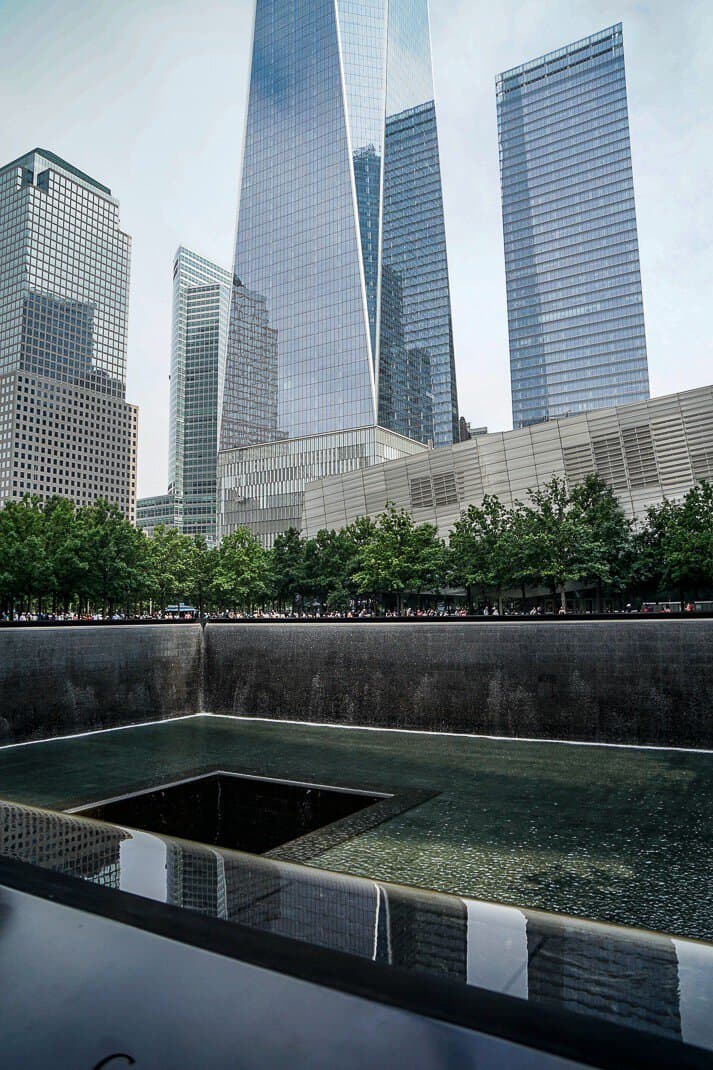
Outside Sept. 11 Memorial
Located three blocks from the Chambers Street subway station, the memorial is a gleaming, triangular glass tower. Featuring a 408-foot needle on top, it stretches 1,776 feet – not coincidentally the year of U.S. independence.
But before I even entered the building, the symbolic architecture hit me every time I turned around. In the exact footprint of the two towers that collapsed are twin reflecting pools. Each pool has North America’s largest manmade waterfall, torrents of water falling 30 feet. As Israeli-American architect Michael Arad says, “Although water flows into the voids, they can never be filled.”
While one pool was empty for maintenance, I could still walk around each and see the countless number of names engraved on the plaques. Rako Camaj. Zhe Zeng. Neal Hinds. George Ferguson. Luis Manuel Lopez. Michael McDonnell. Muriel Siskopoulos.
Endless names. Endless stories. Endless tears.
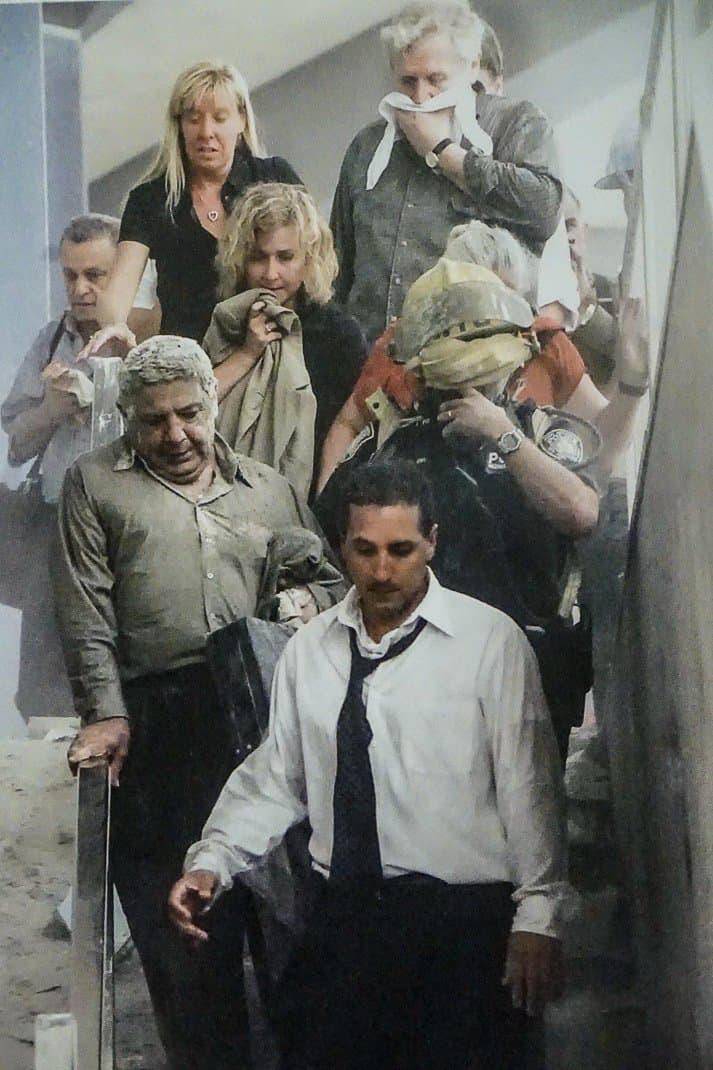
My Sept. 11
This was my first visit to the site since I sandwiched 9-11 between two trips to New York. I wasn’t there on 9-11 but I was there on 9-4.
I stayed in the World Trade Center Marriott.
That year, 2001, I covered baseball for the Denver Post and went to New York for a story on the Brooklyn Cyclones, the Mets’ new farm team across the Brooklyn Bridge from the World Trade Center’s Financial District. Every day when I walked to the subway station I remembered walking through the World Trade Center lobby and seeing the ceiling about four or five floors up.
I eerily remember a terrifying thought. What would it be like to see that ceiling collapse on you under the weight of a 110-story tower?
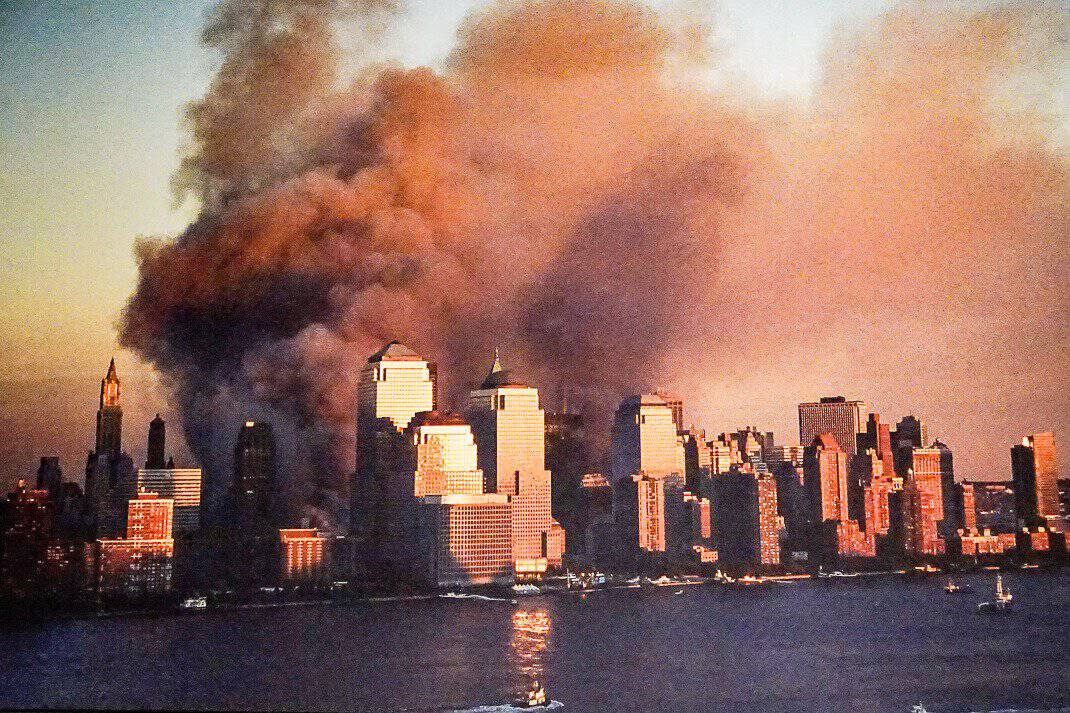
One week later, on the morning of Sept. 11, I had just finished writing a story and called my office to say I was sending it in. Our secretary said, “John, I don’t think your story is getting in tomorrow.”
“Why?”
“A plane crashed into one of the Twin Towers. Turn on the Internet.”
I turned on my desktop computer and saw smoke coming out of the building. I thought it was a private Cessna that got lost and accidentally rammed into it. I went back to the phone and in what may be the world’s worst knee-jerk response to the 9-11 tragedy, I said …
“So?”
“Hang on. I’ll get Kevin.”
Kevin Dale, our sports editor, got on the phone and said, “Terrorists attacked the Twin Towers. That was a passenger jet.”
I had two quick reactions. One, how in the hell is killing innocent people going to help Palestine get its own homeland? (My perceived motive at the time.); two, I feared a backlash of Muslim racism. I have visited 19 Muslim countries and they are some of the nicest people I’ve ever met. People are not their government. I knew that the one people who hate Islamic terrorists more than Westerners are Muslims.
They’re the ones usually getting killed.
Turns out, the U.S. did remarkably well. Incidents against Muslims were nearly unheard of that first week after the attack.
On Oct. 9 I was back in New York to cover the New York Yankees and Oakland A’s in the baseball playoffs. I went to the site and debris still filled the massive hole in the ground. Jagged metal, rubble and machinery were everywhere. Surrounding the site was a solid wall of photos of lost loved ones. A young man would be beaming with his wife or girlfriend on a sunny day under the words “Have you seen him?”
So few were ever found. They were all buried under the massive tons of concrete that I passed through only a month earlier. The lines of security at LaGuardia Airport were so long – usually three hours – I went straight to the airport from Yankee Stadium after my 1 a.m. deadline to catch a 7 a.m. flight to Oakland.
Twenty-three years later, just two weeks ago, I was back.
Almost before the dust settled from the collapsed buildings, a memorial was being planned. In 2006, construction began on the memorial and it opened in 2011.
On Sept. 11.
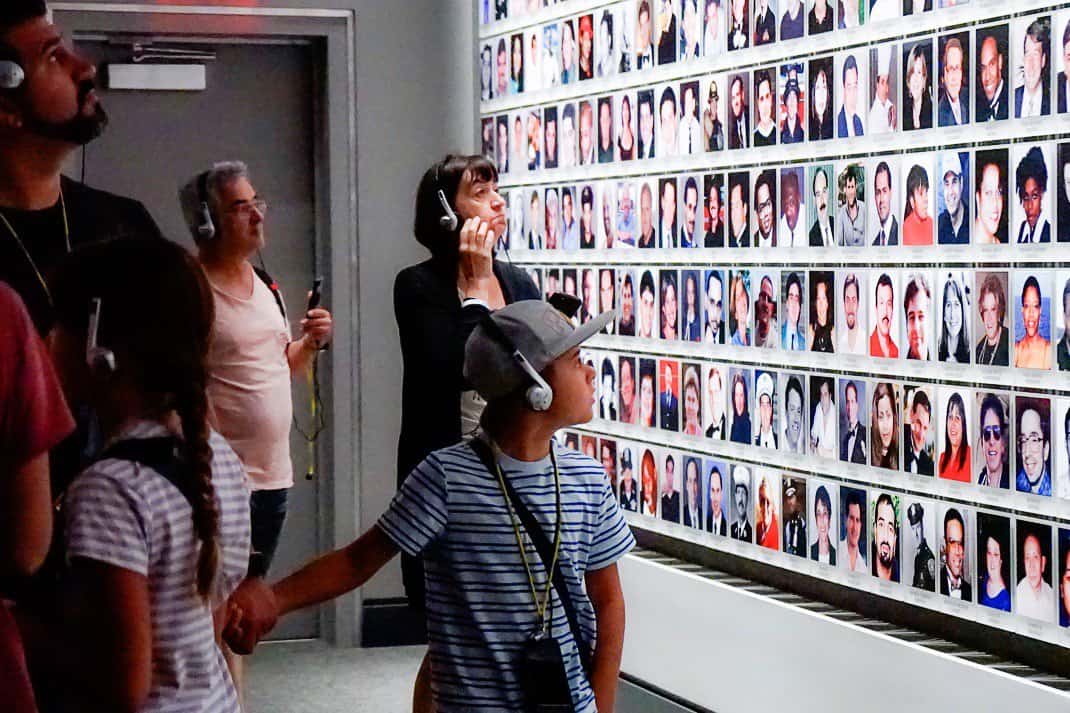
Inside museum
Living in Europe, I’ve been to almost as many museums as restaurants, and the 9-11 museum has the most unique atmosphere I’ve ever experienced. Outside the museum I heard the usual chatter of international tourism combined with the heavy traffic and bustling suits flying around the area.
As soon as I walked in, I heard nothing. Near complete silence. No conversations. No tour guides. Certainly no laughter. Any spoken words were whispers. Tour guides spoke as if not wanting to wake someone up. Maybe the dead?
Previously, I heard mixed reports about the museum. Reviews likely depend on how 9-11 impacted you. I was more angry than anything. Yet the museum truly is magnificent. It’s beautifully constructed, filled with history and expertly signed, giving me a sense of the magnitude of what the terrorists destroyed.
When the World Trade Center opened in 1973, it was called the largest building project since the Great Pyramids. At 1,368 feet, six feet higher than the South Tower, the North Tower was the tallest building in the world. And both were massive. The World Trade Center had 200 elevators, 1,200 bathrooms, 40,000 doors, 200,000 lights, 7 million square feet of tile ceilings and more steel than the Verrazano Narrows Bridge.
It had 12 million square feet of office space for 50,000 workers.
When it all came tumbling down, 2,603 people died and 300 businesses were lost.
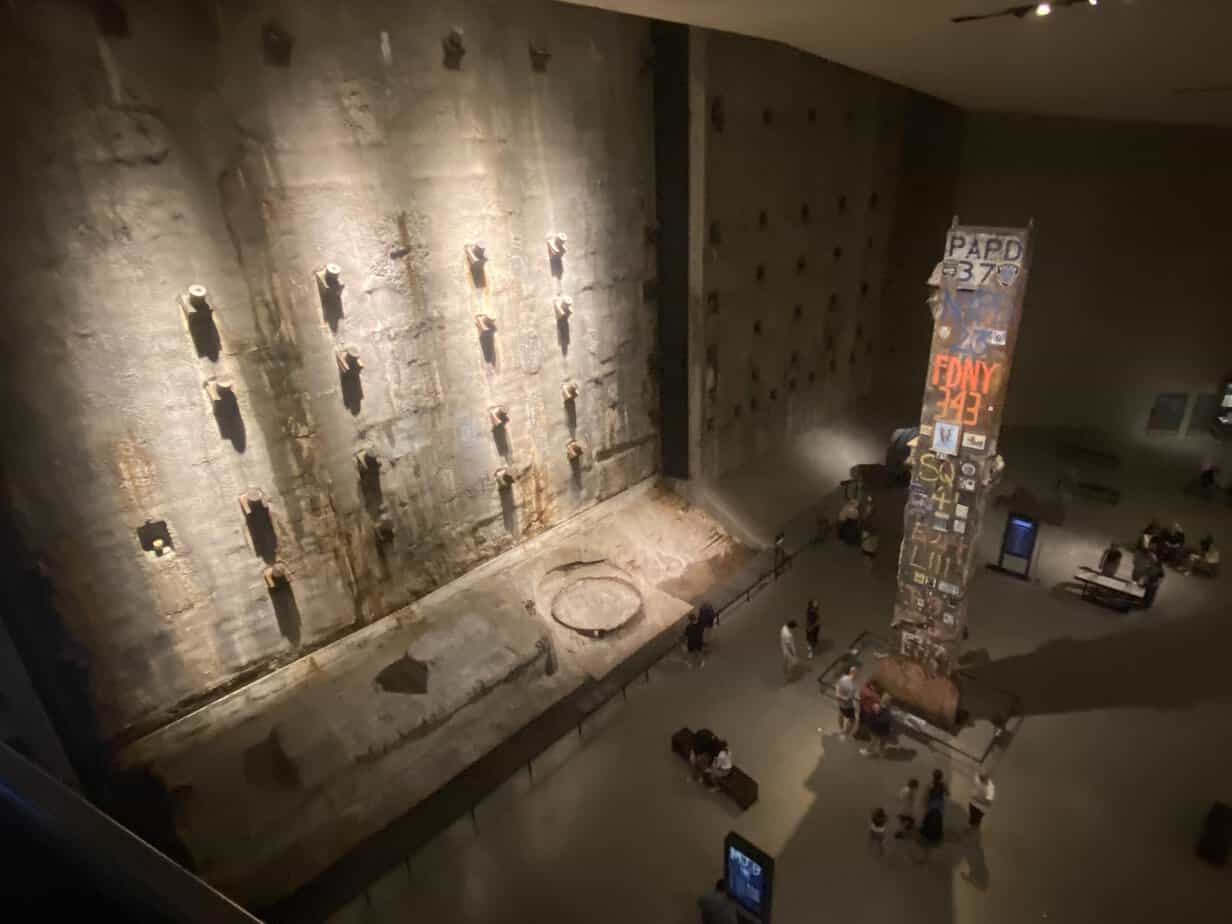
However, part of it still stands. As I ascended stairs to get an aerial glimpse of the museum, to my left stood a trident that was part of the North Tower’s foundation. Also, standing about 40 feet high was a slurry wall, built under both towers to keep the nearby Hudson River from leaking inside. Gray and ragged, it still has the bolts that held the building in place.
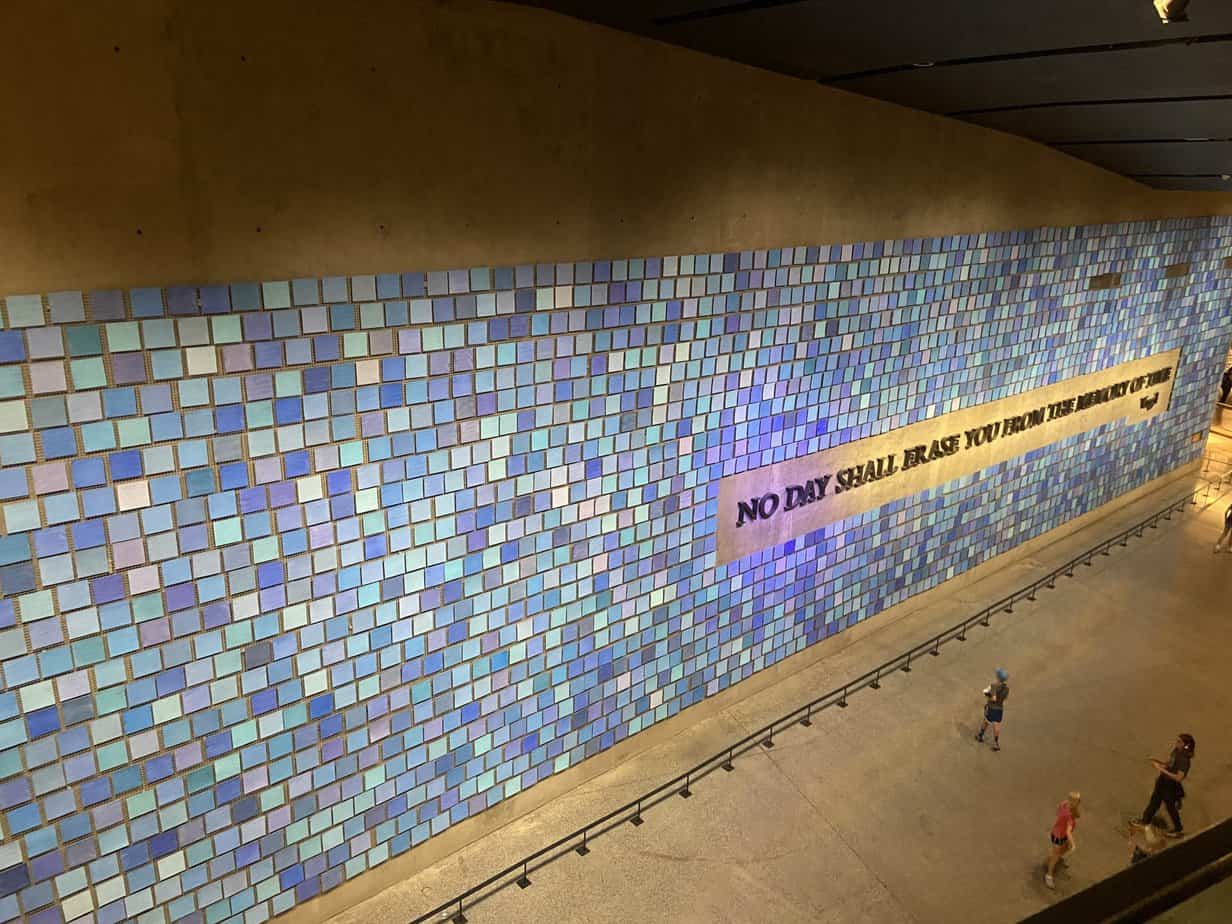
There is a wall covered in blue tiles, an odd, mod-art exhibit for such a somber museum. But they aren’t just blue. Every single tile is a different shade of blue to represent what the beautiful blue sky looked like that morning of Sept. 11.
The number of tiles is 2,983.
Above the tiles are words from The Aeneid: “No Day Shall Erase You from the Memory of Time.”
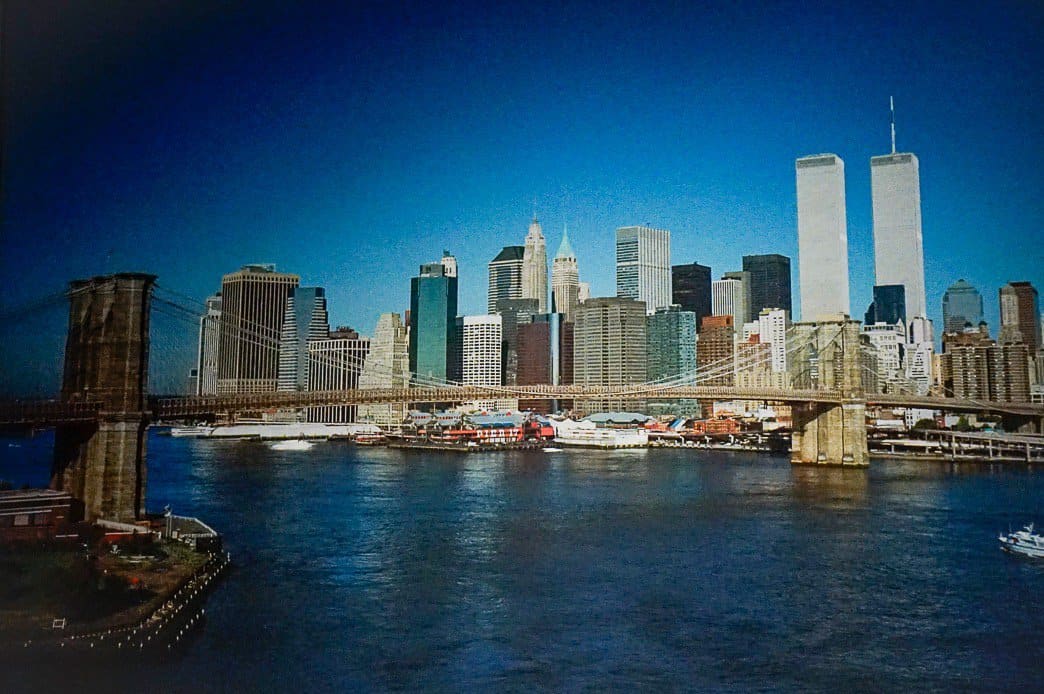
The photos
Huge photographs fill the museum. They show the Twin Towers from every angle, from them artistically reflecting the sun to the majestic view from Staten Island. It’s startling how much the two buildings commanded the world’s biggest skyline. And to see photographs of massive clouds of fire and smoke spilling out from the upper floors remain jarring to this day.
So are the photos of observers staring up at the towers, hands covering mouths, hugging strangers, fear etched in every inch of their faces.
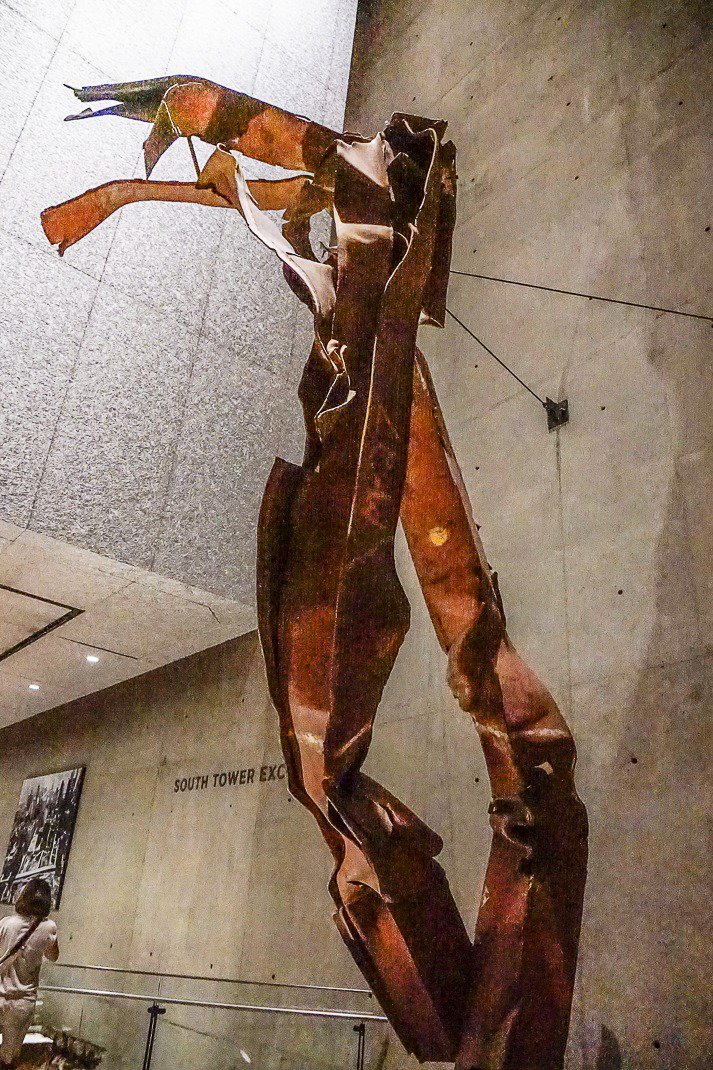
I passed a big section of twisted metal about 30-feet long, charred and bent. It was a section of the steel facade that fell from Floors 93-96, the floors that the plane hit in the North Tower.
The most moving photos, however, were small. Five by seven snapshots of every 9-11 victim cover every inch of floor-to-ceiling walls. Old. Young. Fat. Fit. Black. White. Asian. Muslim. Christian. Sikh. No one escaped the terrorists’ wrath that day, an indiscriminate slaughter of innocents from all walks of life.
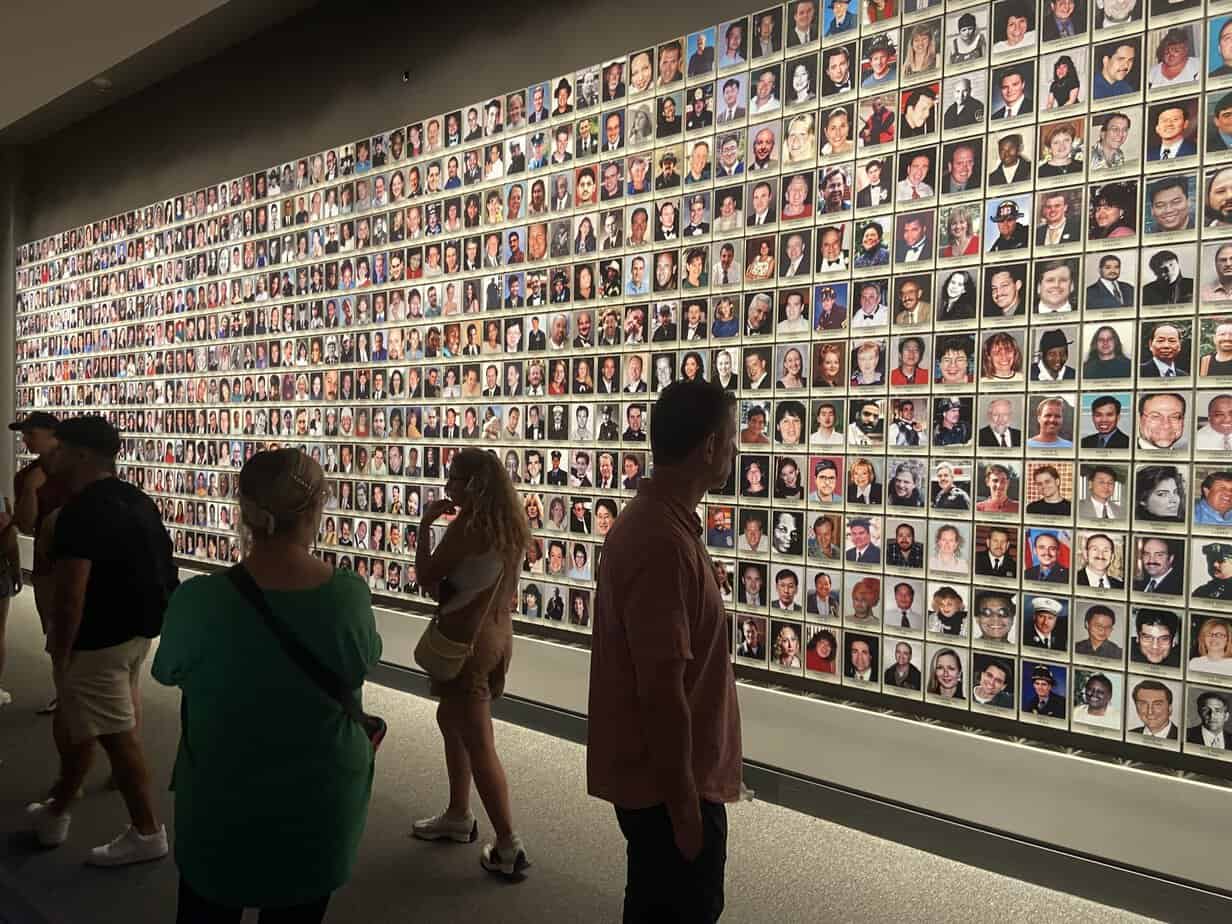
Then you get the stories behind the photos.
On one wall near the photos is a never-ending video of each victim’s life. A name and age would appear. Then a loved one would describe the person they lost, how she doted on her children or how he loved to fish or how he always wanted to be a fireman and help people.
It’s hard for one museum to honor 2,983 victims. The 9-11 Memorial and Museum does it.
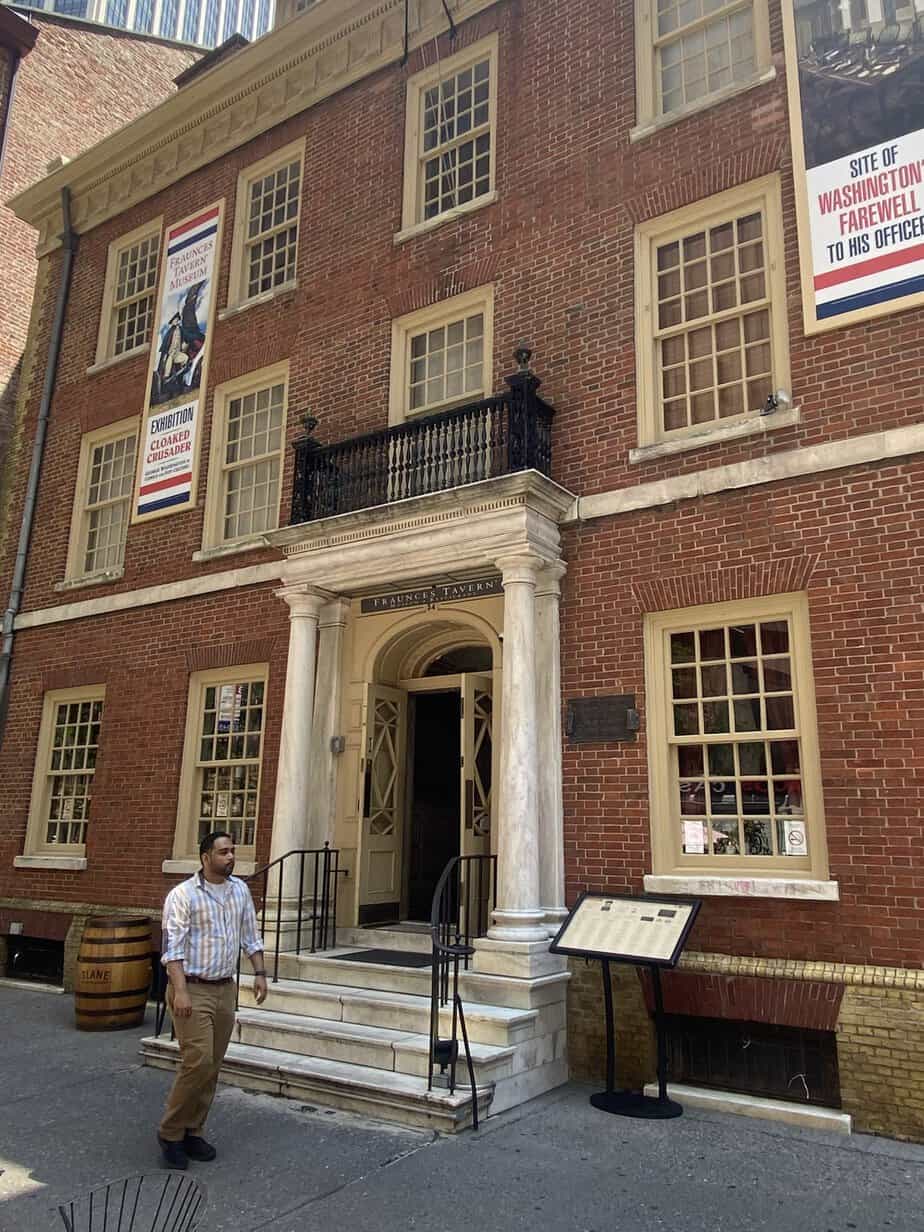
I later walked out into New York’s steaming 90-degree day with 58 percent humidity. Parched, tired and a bit gobsmacked by the jarring memories that came back, I escaped a few blocks away to Fraunces Tavern, New York’s oldest bar. Opened in 1762, it’s covered in old dark wood and has the original room where George Washington whetted his whistle while in New York.
My nation’s founding father built the U.S. on freedom and independence. Nearly 240 years later, only five blocks away, part of our freedom was destroyed.
I will never look at a waterfall the same.
(Next Tuesday: My 50-year high school reunion.)
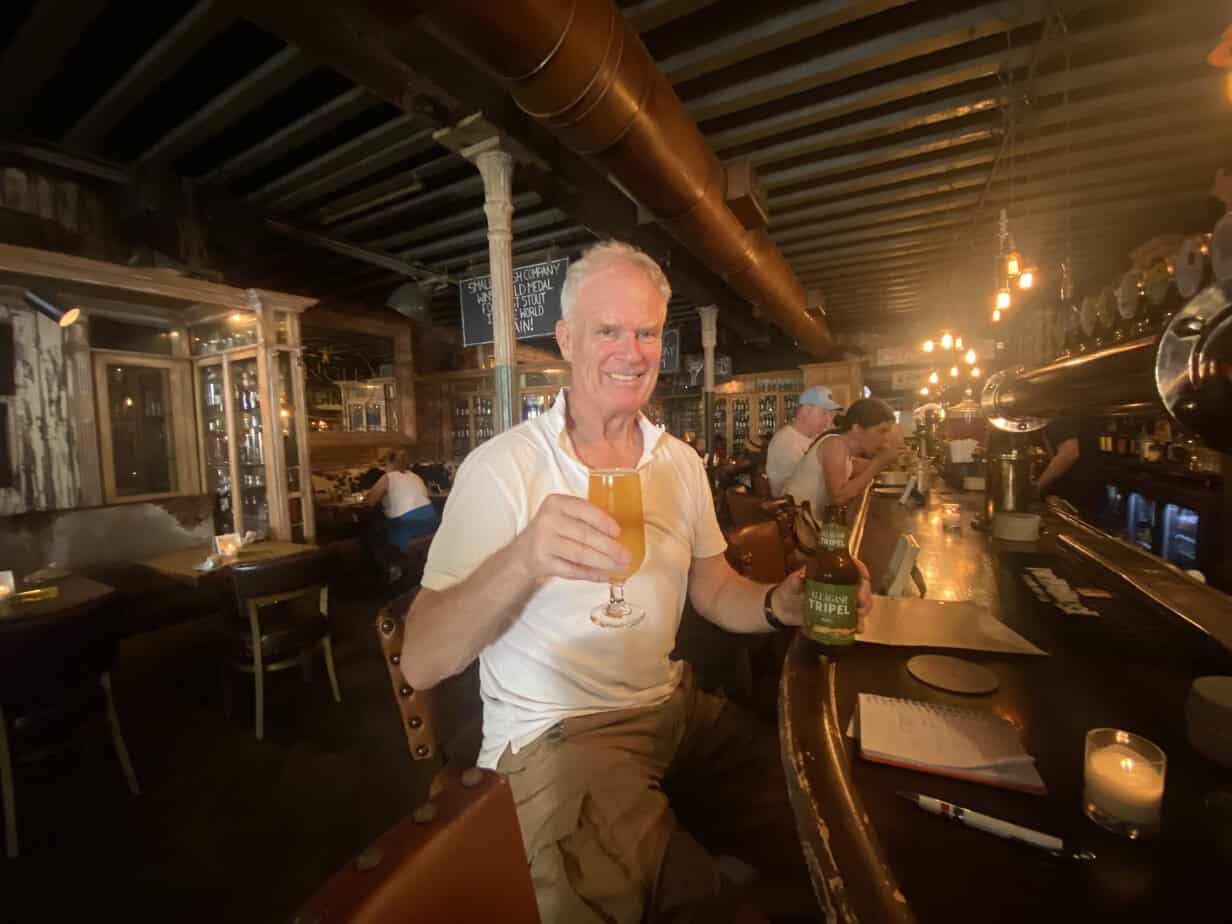
If you’re thinking of going …
Museum information: 180 Greenwich St., 1-212-312-8800, https://www.911memorial.org/, info@911memorial.org, 9 a.m.-7 p-m., $21-$33.
Where to stay: Hilton Garden Inn Central Park South-Midtown West 207.00, 1-212-253-6000, https://www.hilton.com/en/hotels/nycwfgi-hilton-garden-inn-new-york-central-park-south-midtown-west/?SEO_id=GMB-AMER-GI-NYCWFGI&y_source=1_MjA4MzIzMC03MTUtbG9jYXRpb24ud2Vic2l0ZQ%3D%3D, I. Three-star hotel with big rooms just south of Central Park is ideal location in the middle of the city. A tavern is across the street. A bar with a comedy club is next door. I paid €207 for one night, a bargain in a city where hotels for the first time average $300 a night.
Where to eat: Westville, 88 7th Ave., Chelsea neighborhood, 1-212-924.2223, 11:30 a.m.-10 p.m. Monday-Friday, 10 a.m.-4 p.m., 5-10 p.m. Saturday-Sunday. Reasonably priced health food chain in a city with outrageously priced restaurants. Sandwiches from $11-$17, salads $11-$19. I paid €55 for two.
When to go: July and August are hot and crowded. We had temperatures in the 90s with about 50 percent humidity. May ranges from 54-72 degrees. January 26-39.


July 30, 2024 @ 8:37 am
Thank you John!! I can’t tell you the number of times I’ve taken the train up to NYC and skipped the museum…I definitely won’t miss it next time. I really got a sense of the magnitude and emotion from your writing.
July 30, 2024 @ 5:39 pm
Thanks, Melissa. Buy the ticket online. It gets you right in the door quickly. The line to buy tickets is always a mile long.
July 31, 2024 @ 11:17 am
There actually is one small section of the original brown marble floor and set of doors from the old WTC complex in its original place. It’s the entrance into the Oculus right in front of the E train. There is a sign and a plaque, but most people walk through it and don’t realize what it is. I remember because I commuted through there (and still do). Great article – Thanks!
July 31, 2024 @ 5:33 pm
Thanks for the note, Howard. I wish I had known that.